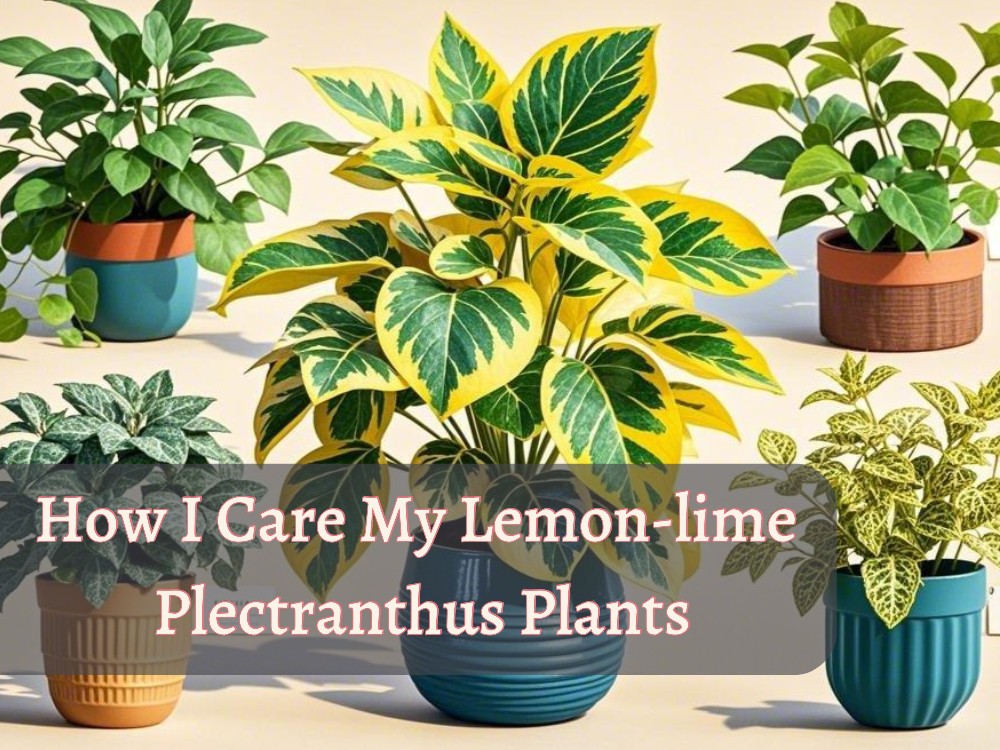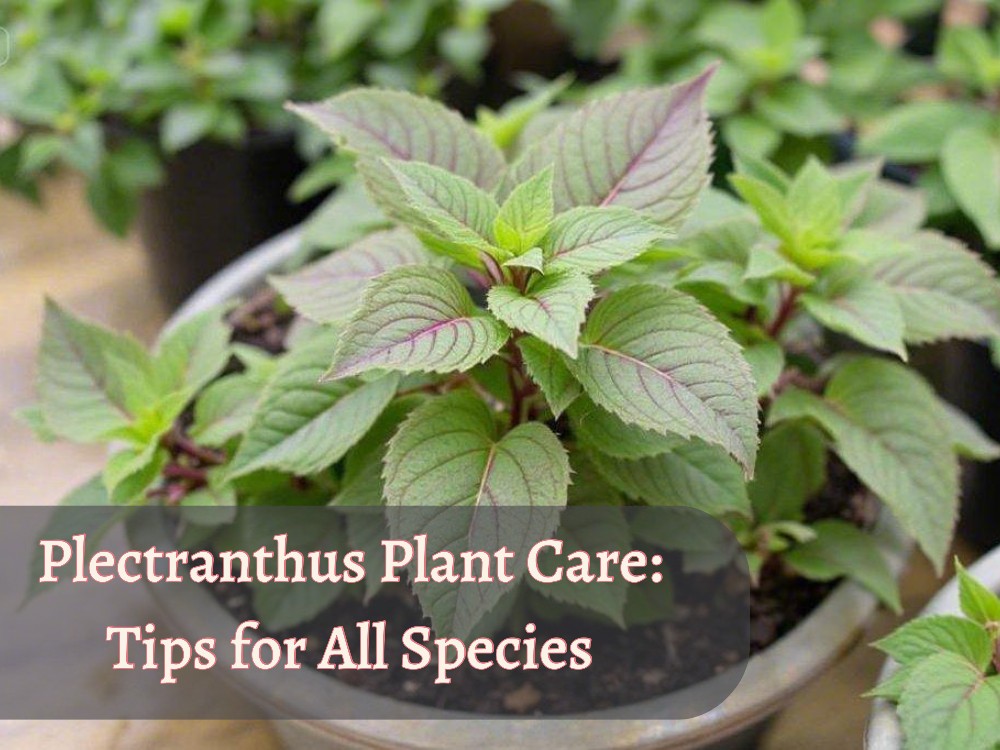The concept of trailing plants can be confusing for gardeners, as their growth patterns sometimes overlap with climbing, spreading, and vining habits. Today, we will try to understand how plants adjust their growth habits to their environment and location and how these climbing, spreading, and vining growth habits can be mixed. This mix-up creates its types, for example; trailing climbers, spreaders, bushier, etc.
- What are Trailing Plants?
- Trailing vs. Climbing
- Trailing vs. Spreading
- Trailing vs. Vining
- Trailing vs. Bushy
- Environmental Factors Affecting Trailing Plants
- Gardener's Guide: Practical Tips for Working with Trailing Plants
- Final Thoughts: Understanding Overlap Between Trailing and Other Growth Habits
- Common Asked Questions and Their Answers
What are Trailing Plants?
Trailing plants grow their stems or vines to hang above the ground or over the edge of containers. These plants are commonly grown in hanging baskets, planters, and ground covers. The main feature of trailing growth is that the plant spreads its growth downward or horizontally.
How Trailing Plants Overlap with Other Growth Habits
Trailing vs. Climbing
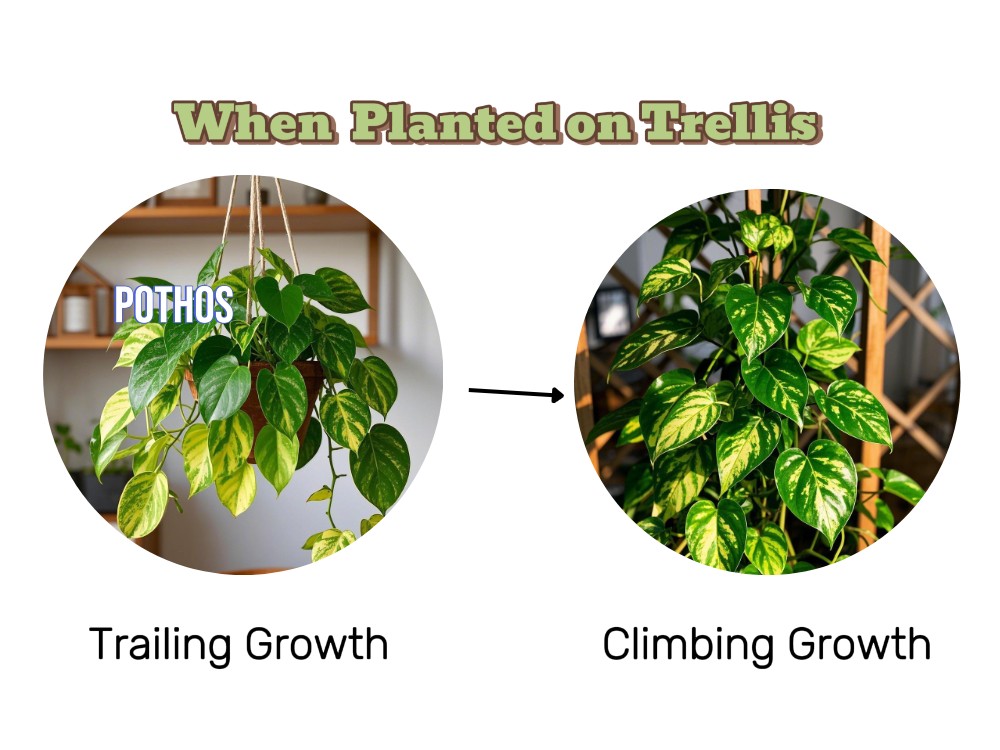
- Trailing plants grow vertically on the ground or in hanging containers.
- Climbing plants grow vertically. They climb up support using their tendrils or twining stems.
Overlap
If a trailing plant is attached to a trellis or support structure, it can adapt its growth to a climbing habit. For example, a Pothos is a trailing plant that will adopt a climbing habit if planted on a trellis. The plant uses its tendrils to grow vertically.
Trailing vs. Spreading
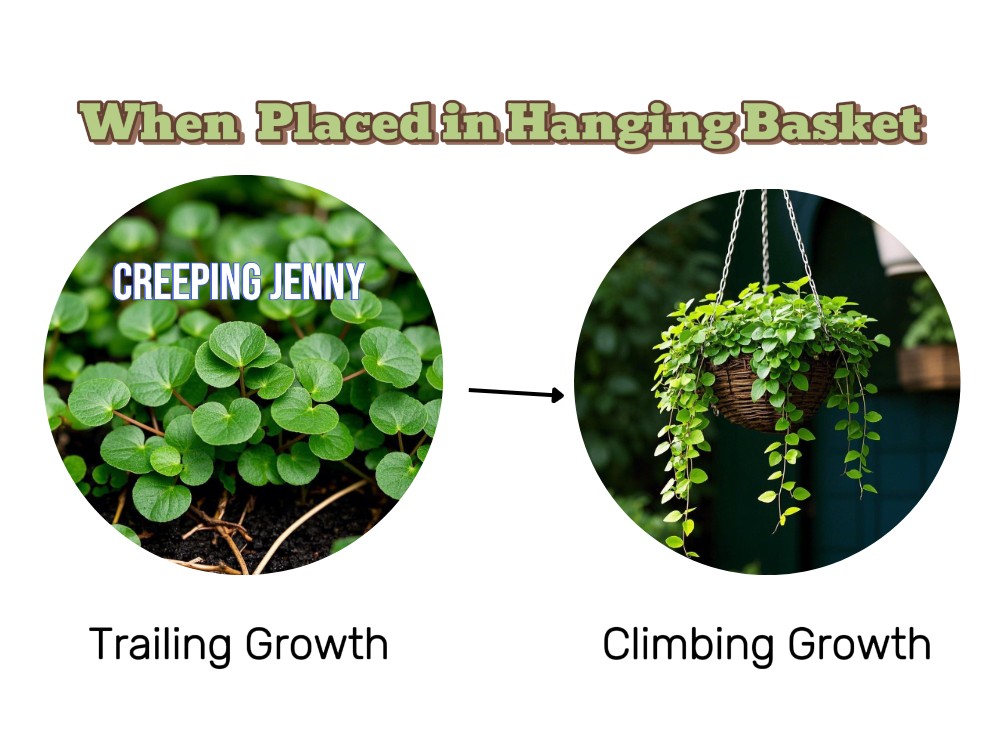
- Spreading plants grow horizontally and along the ground. They are ideal for ground covers.
- Trailing plants tend to grow horizontally or spread out.
Overlap
If a spreading plant is placed in a confined space (such as a container), it can adjust its growth to trailing. For example, if Creeping Jenny is placed in a hanging basket, it will show trailing growth rather than ground cover.
Trailing vs. Vining

- Vining plants climb support using their tendrils or twining stems.
- Trailing plants hang down to the ground or in containers.
Overlap
If a vining plant grows in less space or support, it can shift its growth toward trailing. For example, when a English Ivy finds confined space, it can hang down using its tendrils, which resembles trailing growth.
Trailing vs. Bushy

- Bushy plants grow thick, compact, and spread horizontally along or above the ground.
- Trailing plants hang down to the ground.
Overlap
Busy plants may adopt a trailing growth pattern if placed in a hanging container. For example, Trailing Lobelia show trailing growth in hanging baskets but thrive bushier and denser when planted in open spaces.
Please Note That: Trailing plants’ growth can be influenced by environmental factors. These changes are not always exact, but rather a mix of primary and affected growth. We understand this through examples, but the response can vary for each plant.
Environmental Factors Affecting Trailing Plants
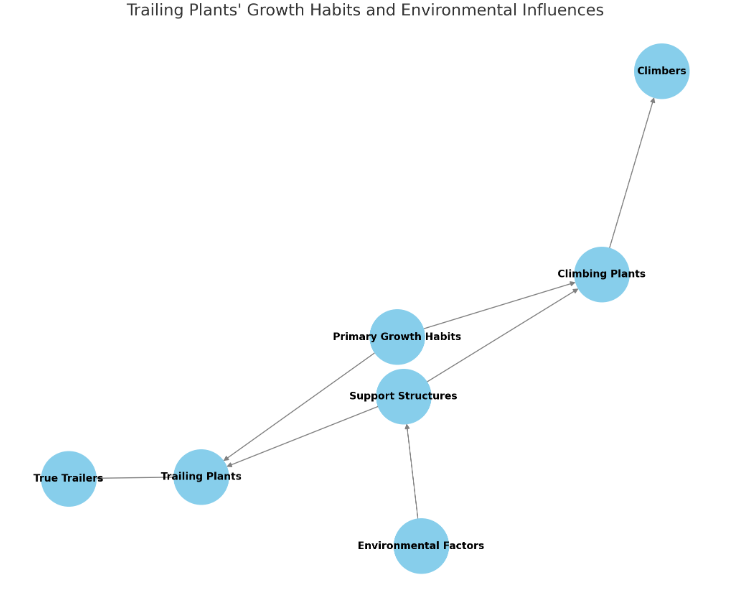
As you can see in the above image, a true trailer is a trailing plant, when its primary growth habit find support structure (environmental factor), trailing plant shows climbing growth and becomes a trailing climber.
Support and Space
If a trailing plant is given a support structure (such as a trellis or wire), it can change its growth to a climbing or vining habit.
Space Availability
When plants thrive in limited space, they shift their growth towards a horizontal or trailing pattern. For example, a morning glory will adjust its growth to a trailing pattern if placed in a container instead of as a ground cover.
Gardener’s Guide: Practical Tips for Working with Trailing Plants
If you are using trailing plants, here are some tips for growing and maintaining them:
Provide proper support
If you want trailing plants to climb or vine, provide them with a proper support structure (such as trellises, hanging baskets, or wire). This will help them grow vertically.
Consider containers versus the ground.
If you want to spread the ground cover habit of trailing plants, plant them on the ground or in large containers, as they naturally grow.
Monitor space constraints
If you have limited space, keep trailing plants in narrow containers to provide enough space.
Prune regularly
Pruning trailing plants is crucial to control their growth and prevent them from becoming overgrown. This is especially important if they are spreading or adopting a bushy habit.
Check soil and water needs.
Trailing plants need proper soil and consistent water to stay healthy. Keep well-drained soil and water regularly by avoiding too much.
Final Thoughts: Understanding Overlap Between Trailing and Other Growth Habits
Trailing plants can change their growth pattern according to their environment and growing conditions. Depending on their growing conditions, they can have climbing, spreading, vining, or overlapping shrub habits. This mixture of primary growth habits and environmental factors in events is its type.
For example, if a trailing plant holds support, it may adopt a climbing or vining growth pattern. Therefore, if you are using trailing plants, it is vital to understand how these plants adjust their growth to the space and support available.
Common Asked Questions and Their Answers
What is the difference between trailing and climbing plants?
Trailing plants grow down to the ground or in hanging containers while climbing plants use their tendrils or twining stems to climb up a support structure (such as a trellis).
Can trailing plants climb?
Yes, trailing plants can change their growth habit to the climbing habit if they hold a support structure (such as a trellis or fence). For example, Money plants can climb when they get more support from a hanging basket.
Do trailing plants spread out on the ground?
Absolutely! Some trailing plants change their growth habit to a spreading habit and grow on the ground. If kept in a confined space or container, they will grow backward.
Can a plant have both a trailing and climbing habit?
Some plants trail and mix climbing habits, depending on their growing conditions. A trailing plant can adopt climbing growth if a trailing plant finds a support structure.
What environmental factors affect trailing plants?
The growth of trailing plants is also dependent on the environment. They can adjust their growth habits if they discover more space, support, and suitable soil conditions. For example, if a trailing plant is placed in a confined space, it can adjust its growth to a trailing pattern.
How can I encourage my plants to trail instead of climbing?
If you want your plant to trail rather than climb, place it in a confined space, hanging baskets, or containers where it can’t find support at the top. Regular pruning is also essential to maintain the plant’s trailing growth.
What types of plants are best for trailing?
Some popular trailing plants include petunias, creeping jennies, spiders, and mini plants. These plants are ideal for growing in the ground or in containers.
How can I maintain trailing plants?
Proper care of trailing plants requires regular watering, pruning, and suitable soil. If you want to grow a plant vertically, also make sure the plant has adequate support or spacing.
Can trailing plants be used as ground covers?
Yes, trailing plants are often used as ground covers. These plants spread their growth horizontally and cover the surrounding area by growing on the ground.

